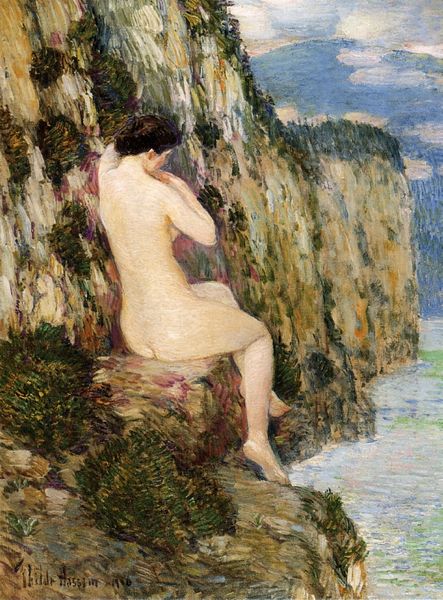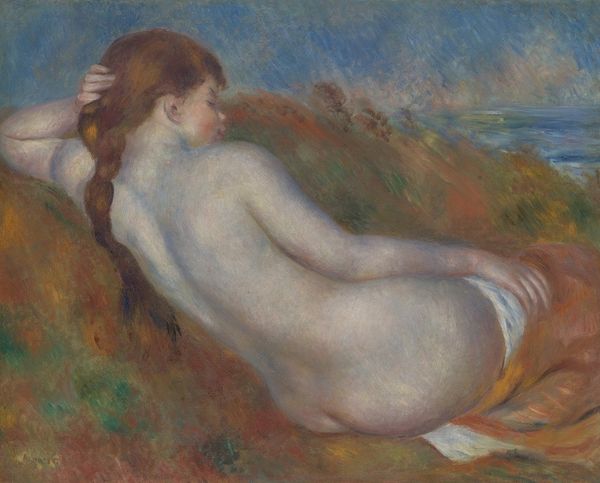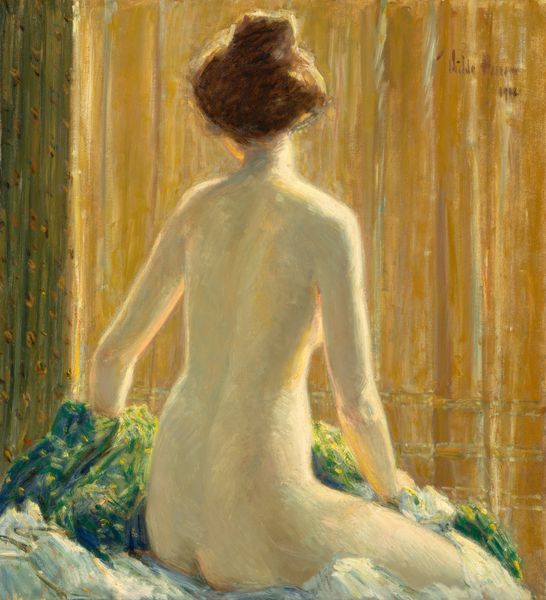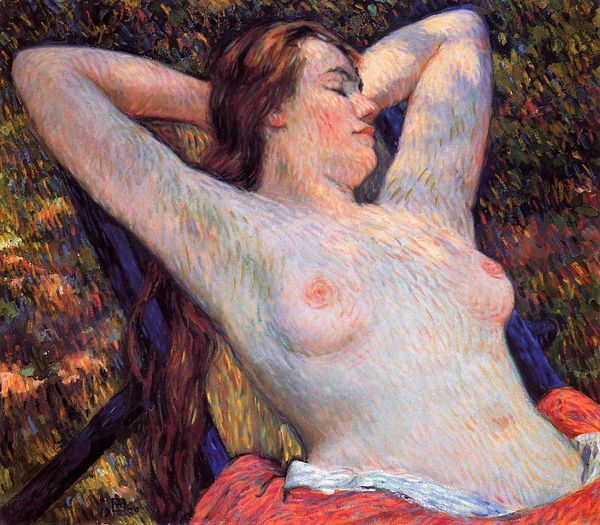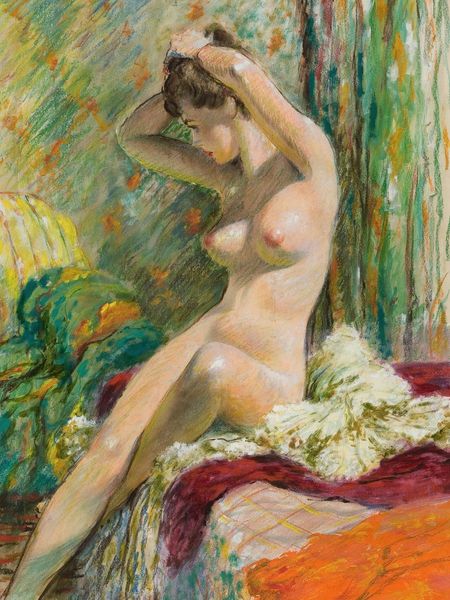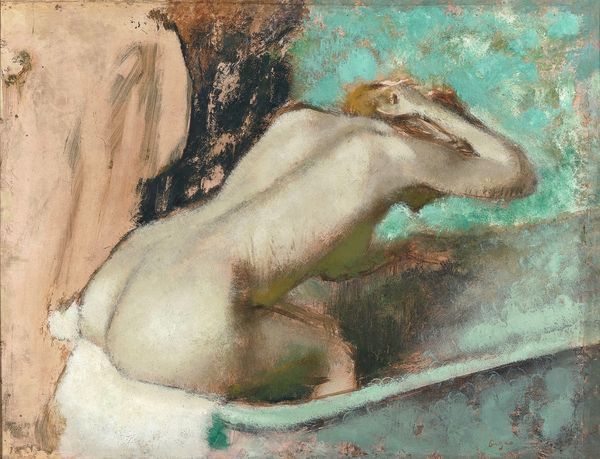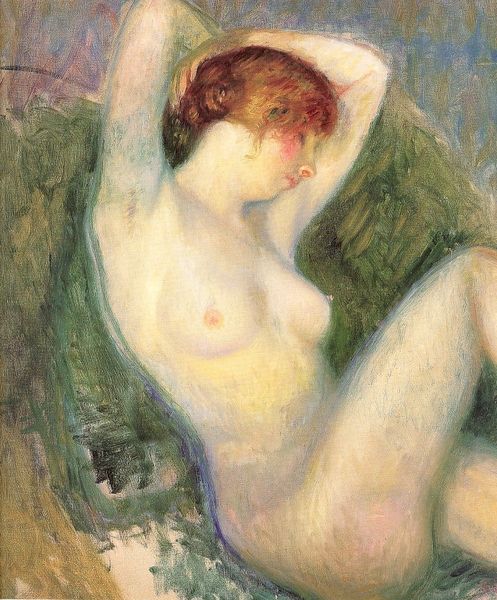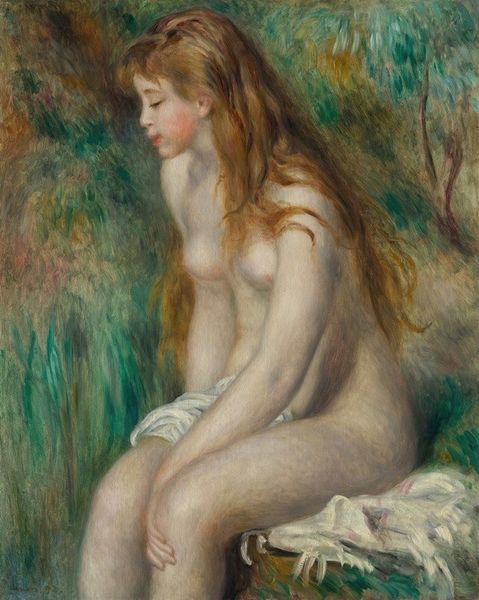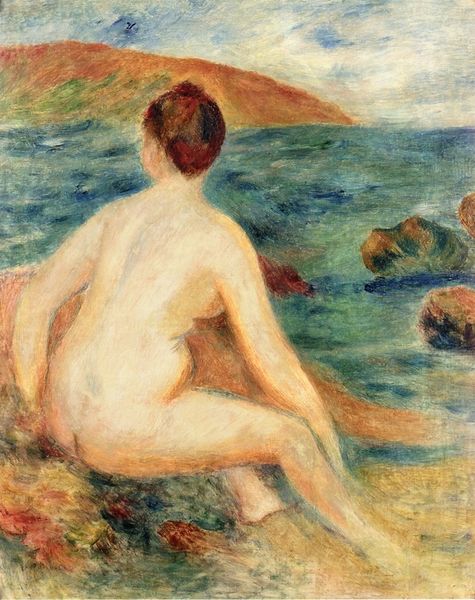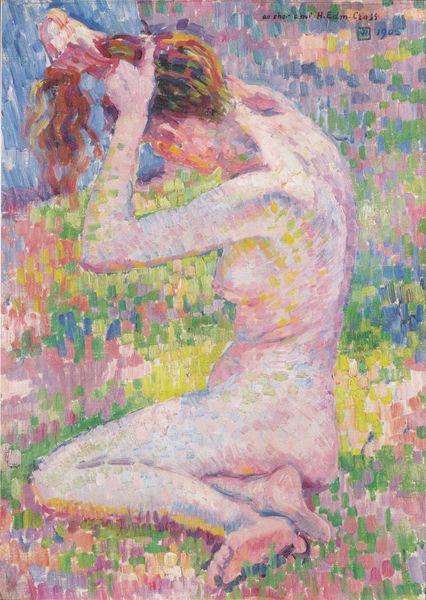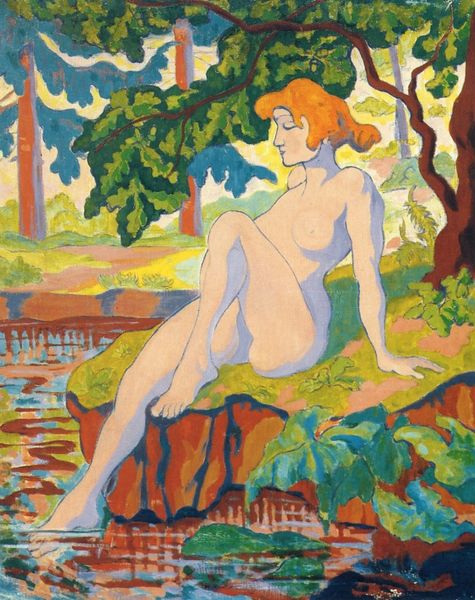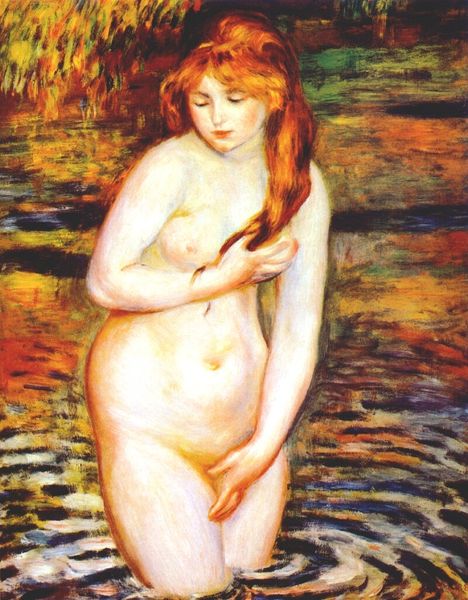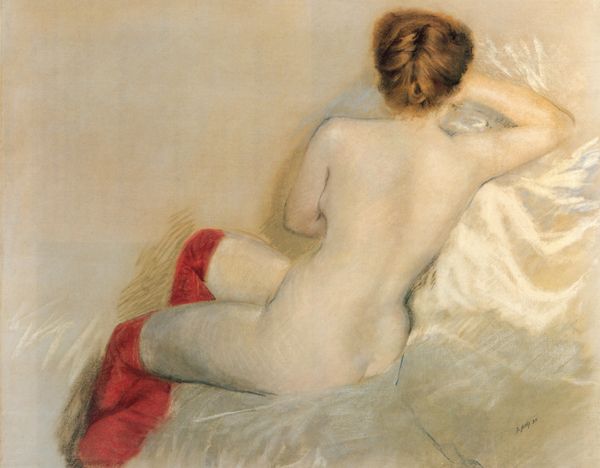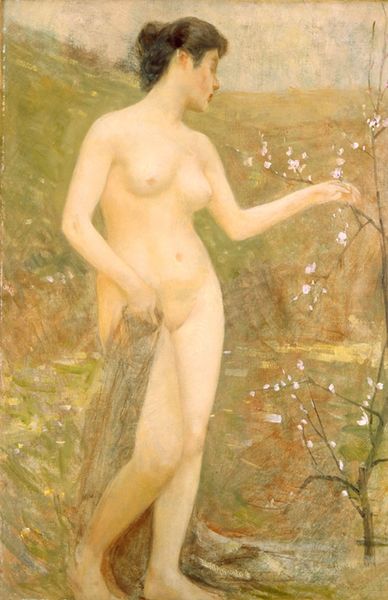
Copyright: Public domain
Curator: My first impression is of stillness. A contemplative mood permeates the scene, a quietude that invites reflection. Editor: Indeed. This is Childe Hassam’s "Aphrodite, Appledore," painted in 1908. Hassam, a key figure in American Impressionism, often depicted scenes of idyllic beauty, and this piece certainly fits that mold. The title itself evokes classical ideals, aligning the subject with the goddess of love and beauty. Curator: Yes, though it is not the stereotypical, frontal-facing Venus. It is very specific with the model turning away from us to stare in the hand-held mirror, perhaps caught in a private moment of adornment or contemplation, but also invoking older traditions like "Venus at her Toilette". And her placement amongst nature also connects the natural landscape and her naked female body. Editor: Right, and Appledore refers to one of the Isles of Shoals, off the coast of New Hampshire. Hassam spent summers there, drawn to the landscape and light. He was a proponent of plein-air painting, which involved painting outdoors to capture the immediate impression of a scene. This certainly reads as such; look at how the light is captured, the loose brushstrokes rendering the foliage and the cliff. Curator: The impasto brings a tactile quality that does feel immediate, sensual, like we are right there, in this hidden place, observing. I also notice the somewhat muted palette, it doesn’t shout with color, more whispers, and subtle contrasts—especially how the blue of the sea interacts with the green of the vegetation. It really does evoke the sense of a myth, perhaps one lost to time. Editor: Hassam was working during a period of significant social and cultural change in America. Urbanization, industrialization, and immigration were rapidly transforming the country. Paintings like "Aphrodite, Appledore" offered an escape, a vision of harmony and beauty amidst the chaos. It idealizes nature, but also perhaps women's beauty ideals through classic myths. Curator: I would add, even today, looking at it from our context, it carries a similar appeal. To find those pockets of serenity and idealized reflection feels both necessary and deeply resonant. Editor: Well said, there's much more that could be unraveled, but that gives everyone a sense of what the painting and its meanings communicate to the 21st century, even now.
Comments
No comments
Be the first to comment and join the conversation on the ultimate creative platform.
